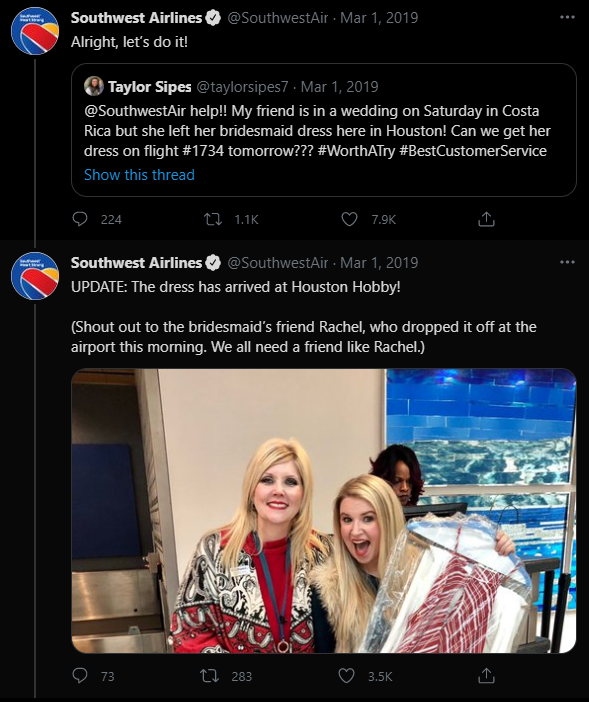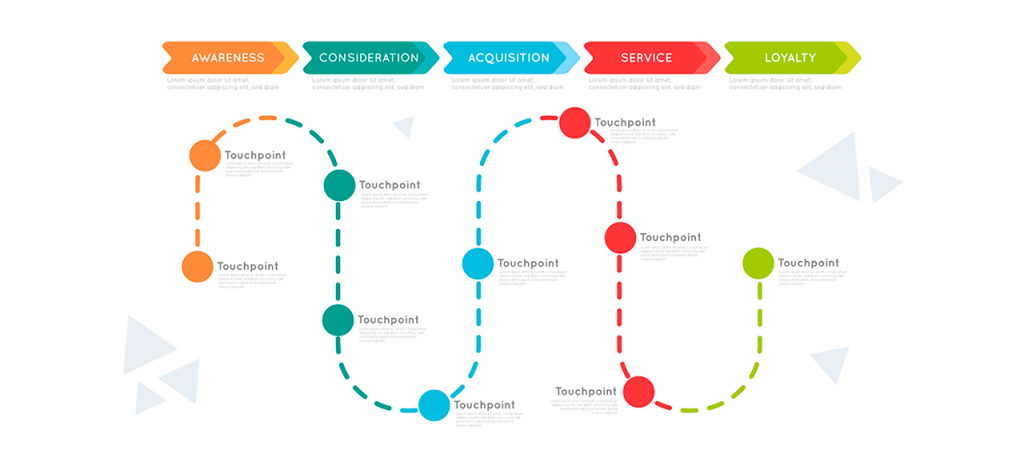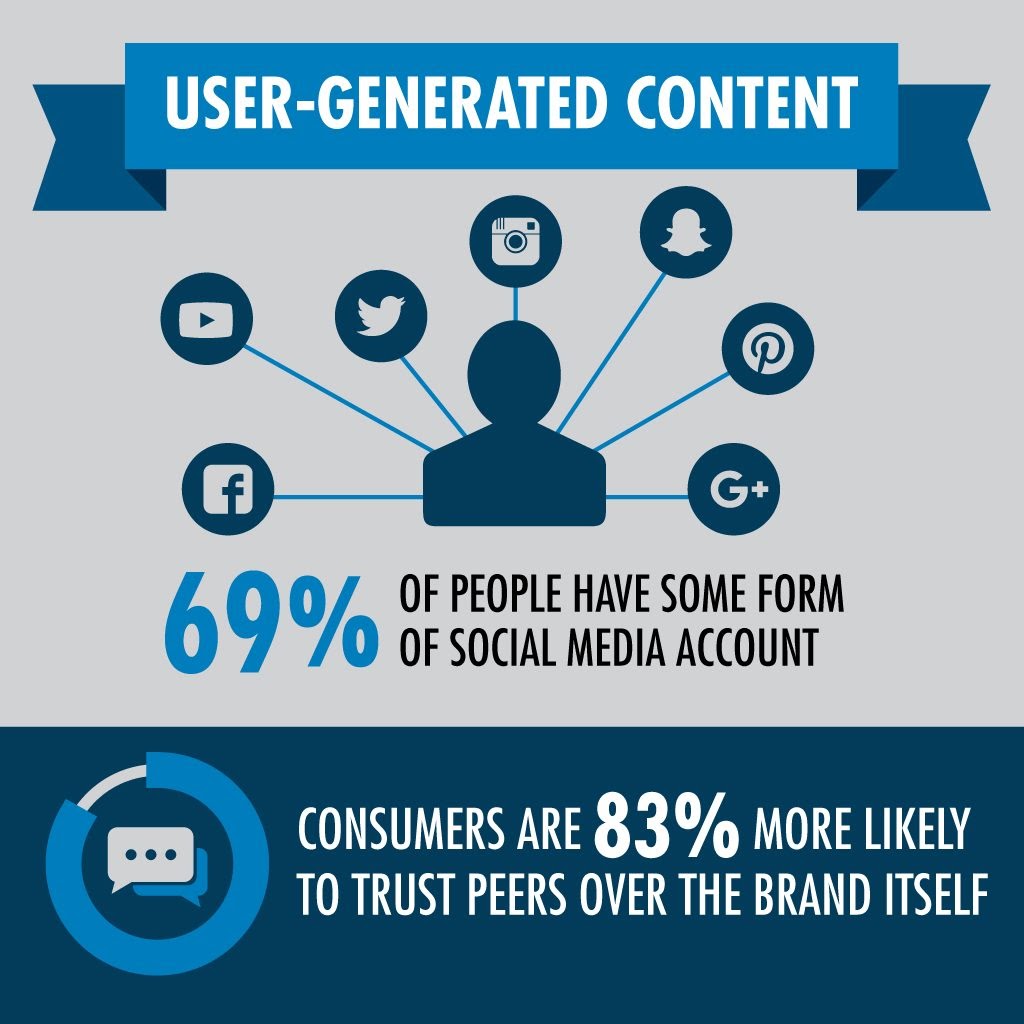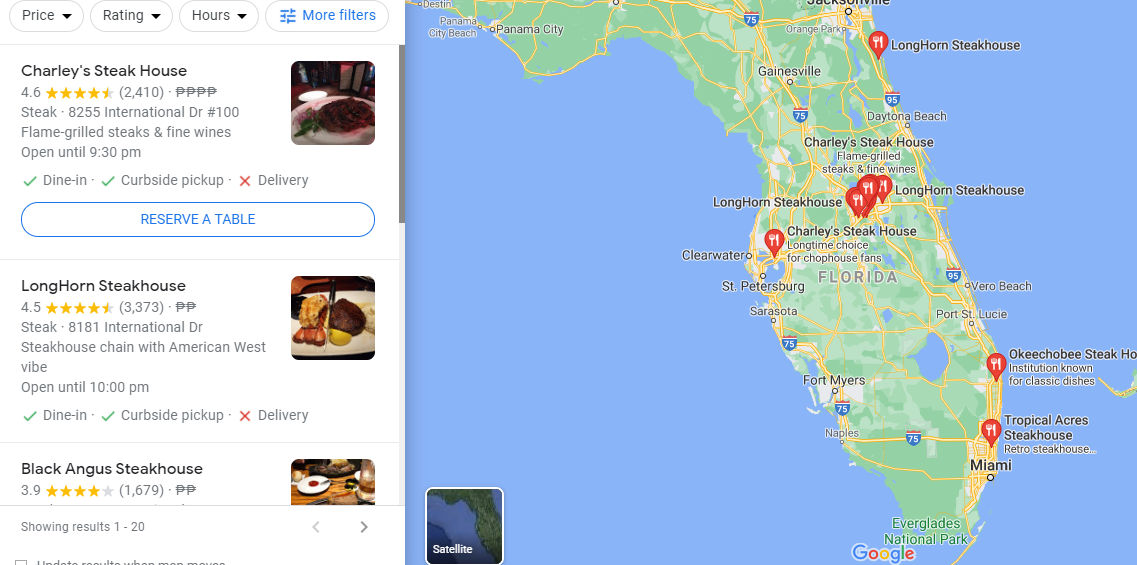Build your customer referral program without the dev time
Sign up for a free trial of GrowSurf to lower your customer acquisition costs, increase customer loyalty, and save gobs of time.
Launch Your ProgramNo marketing strategy is more impactful than word of mouth marketing (aka WOMM or WOM marketing). But are you making the most out of it?
Whether you’re just starting out with your business or you’ve been at it for a while, it never hurts to re-examine your word of mouth marketing strategy (if you have one to begin with). Does it truly inspire chatter among your customers?
If not, it’s high time you use a word of mouth marketing strategy that really works. WOMM is one of the most cost-effective and powerful acquisition channels, but it's often overlooked or underutilized. After all, if your strategy isn’t hacking it, your potential and existing customers will likely end up raving about your competitors instead of you.
In this comprehensive guide, we'll explore proven strategies to harness the power of WOMM and turn your customers into vocal brand advocates.
Word of mouth marketing is the organic process of consumers sharing their positive experiences and recommendations about a product, service, or brand with others. According to BigCommerce, "It's the most authentic form of marketing that businesses have access to because it comes from a place of trust."
Word of mouth marketing is a form of marketing focused on encouraging and motivating happy customers to spread the word about your business through exceptional products, services, and customer experiences.
Word of mouth can take many forms, including offline recommendations, social media posts, online reviews, testimonials, user-generated content, influencer marketing, and more. According to Investopedia, "WOM marketing includes buzz, viral, blog, emotional, and social media marketing."
It's all about creating a buzz around your brand by delivering exceptional products and customer experiences that people can't help but rave about. And when word of mouth snowballs, it becomes one of the most powerful and cost-effective marketing tools in your arsenal.
It's important to note that word of mouth marketing is distinct from referral marketing, although the two can complement each other. As Investopedia explains, "Word-of-mouth marketing differs from natural word-of-mouth references to a company's products and services in how it may come as the result of a promotion, encouragement, or other influence by a company, otherwise known as 'seeding.'"
Word of mouth is a more passive way to get more followers, leads, and sales through organic conversations and recommendations, while referral marketing involves actively incentivizing customers to refer others (although you can use referral marketing to kickstart word of mouth, as you'll soon find out).
Traditionally, word of mouth marketing happens organically from one person to another through face-to-face interactions. But thanks to the internet and social media, marketers can now launch targeted WOM campaigns across a wide range of digital channels, allowing them to generate word of mouth on a much larger scale. As HubSpot notes, "Social media is so influential, there are several ways that it has affected word of mouth."
That's not to say social media chatter trumps "traditional" face-to-face word of mouth. Both online and offline WOMM have their strengths and should be leveraged in a complementary fashion. But if you want to expand and amplify your reach, you must use available digital resources and tools to create the triggers that will fuel your word of mouth marketing campaign across multiple channels.
There are two main reasons why word of mouth marketing works:
Word of mouth marketing is incredibly powerful because it's built on a strong foundation of trust and credibility. As the Investopedia notes, "Eighty-eight percent of people around the world said they trust recommendations from friends and family (earned media) above all other forms of advertising."
In fact, a Nielsen study shows that 92% of people trust recommendations from friends and family over any other type of advertising.
Simply put, we trust our friends and family more than we trust companies and their advertising. When you see a banner ad on a website, there's often a sense of skepticism or the thought in the back of your mind saying, "They're just after my money."
But when a friend or trusted peer recommends a product, we give more credence to that recommendation because we know it's coming from a place of genuine experience and without any ulterior motives or expectations in return. As BigCommerce puts it, "It's the most authentic form of marketing that businesses have access to because it comes from a place of trust."
Word of mouth is an inherently targeted and relevant form of marketing. When you love a certain product, you don't go out of your way recommending it to everyone indiscriminately. Instead, you share it with people who you know will find it genuinely interesting, useful, or relevant to their needs and interests. As BigCommerce explains, "People are more likely to share products and services that they find valuable with others who might benefit from them as well."
Would you recommend a windshield cover to someone who doesn't own a car? Exactly. Word of mouth recommendations are highly targeted and contextual, making them far more likely to resonate with the right audience.
While word of mouth marketing is incredibly powerful, you're not going to yield real results if there's no sound strategy in place. Here are 7 proven steps to develop a comprehensive word of mouth marketing strategy that works, according to HubSpot:
Start by getting clear on your brand's purpose, values, and the impact you aim to make. According to BigCommerce, having a strong brand purpose helps create an emotional connection with customers that can inspire word-of-mouth marketing.
Why does your 'why' matter so much for word of mouth marketing? Because having a clear and compelling reason for what you do helps your brand form a stronger emotional connection with your customers. And as research shows, customers are far more likely to recommend and advocate for brands they feel emotionally connected to.
As Simon Sinek writes in his seminal book Start with Why, "people don't buy what you do, they buy why you do it."
Our core values and purpose drive what we do and the impact we aim to make. If your customers share and resonate with those core values, they're not only going to love your brand, but they're also far more likely to become vocal advocates who tell their friends and family about it. According to Forbes, "consumers are 4.5 times more likely to recommend or champion purpose-driven companies to friends and family."
Have you ever wondered why Chipotle is so popular? It's not only because the food tastes great. That's part of it, sure. But deep down, many dine at Chipotle because they serve food that is ethically and naturally produced, aligning with the brand's purpose of "Food with Integrity." This purpose resonates with customers and drives word of mouth recommendations.

To define your brand's purpose and core values, start by asking yourself the following questions:
Once you've reflected on these questions and written down your answers, use those insights to craft a cohesive brand strategy that clearly articulates your purpose, values, and positioning. This will serve as the foundation for your word of mouth marketing efforts.
While having a clear brand purpose is crucial, your product or service itself is still your best sales tool and the catalyst for word of mouth. After all, if your offering isn't genuinely improving people's lives or solving real problems in a meaningful way, there's little reason for customers to rave about it.
Having a product or service that solves a genuine pain point or need gives your audience a compelling reason to care about and engage with your brand. It helps position your company in a way that inspires meaning and resonance in your customers' minds, which not only influences them to buy, but also compels them to share their positive experiences with others. As BigCommerce notes, "People are more likely to share products and services that they find valuable with others who might benefit from them as well."
So, how can you determine if your product or service is truly talk-worthy and resonating with your audience? Here are some effective ways to find out:
Pay close attention to both quantitative metrics like ratings as well as qualitative feedback to identify areas for improvement and opportunities to better meet customer needs.
If your research and feedback indicate that your product or service needs improvement to truly resonate and be worth talking about, start by asking yourself these fundamental questions:
By asking these probing questions, you're establishing a solid frame of reference that will help you deeply understand your audience's needs and find the best solutions to meet those needs in a meaningful way. Continuously examine how your customers are using your products, gather their feedback, and keep iterating and testing new ideas. This customer-centric approach will allow you to identify areas for improvement that will positively impact how your target customers perceive and experience your offering, making it truly remarkable and worth raving about.
You may have a product or solution worth talking about. But if your customer service is subpar, don’t expect your brand to be included in any “most recommended” list.
Imagine having the best halal meal in your entire life and then having to wait around 40 minutes to receive your check. To top it off, the waiter doesn’t even say “thank you.” Kinda sours the overall experience, doesn’t it?
Will you be willing to eat at that restaurant again? Probably not. And there’s absolutely zero chance you’ll recommend it to others.
If that waiter were only friendly enough, professional enough, attentive enough. Chances are you won’t shut up about it.
And you won’t be alone in that. According to a Qualtrics study, consumers who rate a company’s customer service as “good” are 38% more likely to recommend that company.
Exceptional customer service not only provides additional value to your product, but also gives your customers triggers to talk about your brand.
Besides, in an era where empathy is in such a short supply, great customer service is a good way to differentiate yourself.
So, what makes a customer support team good? Being available 24/7 helps. So does being accessible via relevant marketing channels. Delivering fast customer service? Absolutely.
However, doing all of the above can only do so much. If you want people to really talk about you, lead with empathy. Go the extra mile.
SouthWest Air created online buzz by doing just that. When a bridesmaid forgot her dress for her sister’s wedding, they flew all the way from Houston to Costa Rica to bring back the dress and save the day. Now that’s how you go above and beyond (literally) for your customers.

With so many platforms, channels, and tools taking hold of people’s attention, you’ll be hard-pressed to grab the attention of your audience, much less make them talk about your brand with their peers.
Actually, making your prospects notice you is the easy part. Holding their attention and making your brand top of mind is where it gets difficult.
This is where CX (Customer Experience) can help.
James Winter, VP of Marketing at Brandfolder, defines Customer Experience as “the overall impression your brand makes on your target audience throughout their relationship lifecycle with your business—across multiple channels, platforms, and devices.”
In other words, customer experience offers a holistic view of how your customers perceive and experience your brand. It helps you understand the customer’s experience across multiple touchpoints throughout their interaction with your company, allowing you to deliver relevant experiences that resonate with them.
And the best part? If those interactions are positive, your customers will be more than happy to talk about it, whether they’re a new customer or a repeat customer many times over.

[Source: SITEL ]
To make CX work for you, you need to gain a deep understanding of how and why your customers use your products. Customer experience mapping can help in this regard.

[Source: User Response ]
Nichole Elizabeth DeMeré, CMO of Reeview, brings that point home with the following statement:
“More companies are getting better at the functional basics of customer experience, like responding in a timely manner to questions, streamlining the purchase process, and smoothing out onboarding (not to mention creating a decent product) – which means they need something unique to offer that separates them from their competition. What is the most unique, even unforgettable thing you can offer? The way you make your customers feel.
Emotion not only carries the ability to define your company in a sea of competitors, it can also inspire viral word of mouth marketing from people who love you and want to express that to a large audience, whether because they’re influencers with their own followers, or reviewers.”
Sign up for a free trial of GrowSurf to lower your customer acquisition costs, increase customer loyalty, and save gobs of time.

User-generated content, or UGC for short, is any content that is created, published and/or submitted by users of a brand (who are not associated with that brand).
There’s plenty of good reasons why UGC is often called the ‘new WOM’: It’s word of mouth with all the benefits the internet (particularly social media) has to offer.
UGC can take many forms, including:
Encouraging UGC is a powerful way to generate more buzz for a brand—especially considering that most people are now on social media. It can also significantly impact purchasing behavior. It’s free marketing or promotion in a nutshell. And spreading it is as fun as spreading peanut butter on your piece of bread.
Allow me to drop some UGC stats:

[Source: Business 2 Community]
As already stated earlier, people don’t trust your brand as much as they trust other people.
While some of your happiest customers will sing praises about your brand even if you don’t ask them to, most of them will not.
Giving them a sweet little nudge often does the trick.
Here are some effective and proven ways to encourage your satisfied customers and users to post user generated content:
Customers love to compete, and they will be happy to participate if you throw in prizes they can't resist. A good rule of thumb when hosting contests is to make your customers showcase how or why they use your product or interact with your brand.
Pro-tip: Using hashtags is a good way to boost the reach of your UGC campaigns. Make sure that you use unique, targeted, and memorable hashtags that align with your brand’s message and core values.
Mint, a money management app, used this tactic to great effect via the #MyMintMoment Instagram contest. They invited customers to share a moment in their lives they saved money for. The customer with the best entry wins a $1,000 Visa gift card.
Here’s the lucky winner.

Customer reviews make people buy stuff.
Stats will back me up on this:
It’s simple math. The more positive reviews you receive, the more sales you’ll make.
Not getting as many reviews as you like? Simply ask!
There are many ways to do it:
You can also do wonders for your online reputation by making it easy for customers to leave a review. You can:

If you feel a little awkward asking for reviews, think of it this way: asking for feedback empowers your customers because it shows them you care about their experience. Just don’t forget to say ‘thank you’ after they leave a review (whether it’s good or bad)!
If you want to get people talking, and I mean really talking, create a “talk trigger.”
“Talk trigger” is a term coined by best-selling author and renowned keynote speaker Jay Baer. He even wrote an entire book about it, entitled Talk Triggers (it’s good stuff, read it).
Baer defines a talk trigger as “a built-in differentiator that creates customer conversations.”
A talk trigger is not a one-off marketing gimmick. It’s not your USP. It’s not a grand gesture.
A talk trigger has to meet the following requirements:
In other words, a talk trigger has to be something worthy of remark (remarkable). It needs to be tied to your core business (relevant) so the chatter that ensues will keep your product top of mind. It needs to be realistic (reasonable). After all, doubt can set in and fester if something is too good to be true. Lastly, the talk trigger should apply to all customers (repeatable). If a talk trigger is a one-time deal, why would people keep talking about it?
DoubleTree’s chocolate chip cookies are a great example of a talk trigger. For over 30 years, the American hotel chain has been giving each guest a warm chocolate chip cookie upon check-in. The cookies made such a huge impression on guests (and non-guests) that they can’t stop talking about them. So much so that even the mere mention of “cookie” is enough to remind people of DoubleTree.

Stumped for ideas on how to create a talk trigger that works for your company? You can start by going over significant customer touchpoints (check your customer experience map) and then identifying potential triggers. Don’t be shy to ask your customers for feedback and ideas on how you can serve them better in each of those touchpoints. Once you’ve gathered those ideas, it will be much easier to think of something that will knock your customers’ socks off.
You can learn more about talk triggers at TalkTriggers.com.
Much of this blog post has already talked about how word of mouth marketing is so much better than other forms of advertising.
But let’s get one thing straight: It’s not always the case.
For all the advantages word of mouth marketing has over other marketing channels, it is rather slow. Not to mention that you don’t have full control over the process. If you’re a small or medium-sized business, you might not be able to afford waiting that long.
So, how’s this for a solution: Instead of waiting around for customers to generate prospects for you, why not take matters into your own hands by launching a referral program?
A referral program, after all, is a more direct or deliberate way to encourage customers to advocate for your brand.
Referrals are not just recommendations that happen in casual conversations. They are direct endorsements that facilitate a potential transaction between a business and a friend.
So, how powerful are referrals? Consider these stats:
But there’s a problem: the simple truth is that most customers won’t send you referrals.
They might be thinking:
“What if I send you referrals and you mess up?”
“What’s in it for me?”
“ I want to send referrals, but it’s too damn awkward.”
So, how do you convince your customers to send referrals?
With the right systems and incentives in place, a referral program can help you turn your best customers into brand ambassadors. It’s a fantastic way to make customers feel more engaged about the referral experience. Best of all, it’s a great way to acquire more customers without spending too much of your marketing budget.
In a digitized world where customers are everywhere, running a referral program can get overwhelming fast. Thankfully, you can use a referral program software like GrowSurf to run your referral program on auto-pilot, allowing you to focus on the needs of your customers and on things that move the needle for your business.
Word of mouth doesn’t just happen. It’s not something you can do ad hoc. If you want your word of mouth marketing to take off, you better start treating it like a science. Like any strategy, word of mouth marketing needs a strong foundation to stand on. It needs to be implemented in a way that encompasses the entire customer experience.
Finally, you can launch a referral program to give your word of mouth marketing strategy the kick in the pants it needs to supercharge your growth.
🌎 Social currency is the quantifiable impact of #WordOfMouth marketing
— Chris Tweten 🍁 (@ctwtn) June 6, 2021
Yesterday I published a🧵 on how to build social capital
Today, I explain the 6 social behaviors that drive social currency (w/ examples)! 👇

Sign up for a free trial of GrowSurf to lower your customer acquisition costs, increase customer loyalty, and save gobs of time.
Launch Your Program
GrowSurf is modern referral program software that helps product and marketing teams launch an in-product customer referral program in days, not weeks. Start your free trial today.
Referrals marketing works because it's based on human psychology. Customer referrals will still be effective 100 years from now and here's exactly why.
Word of mouth marketing dates back 1000s of years, from spice trade to early metallurgy. Today? We dive into how to set up a customer referral program to last.
One good way to create a successful referral program is to look at how other people did it. Case in point: Morning Brew. Want to learn how they built an audience of 2.5 million? This blog post breaks down the Morning Brew referral program in detail!